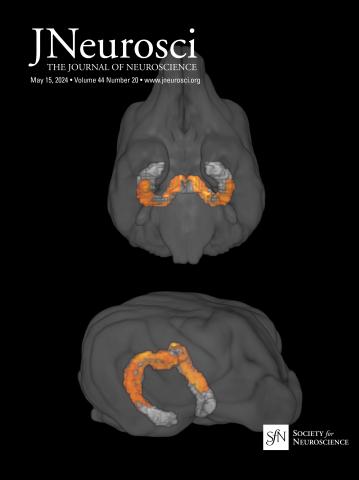Mitochondrial glutamine metabolism drives epileptogenesis in primary hippocampal neurons.
IF 4.4
2区 医学
Q1 NEUROSCIENCES
引用次数: 0
Abstract
All available anti-seizure medications aim at symptomatic control of epilepsy, but there is no strategy to stop the development of the disease. The main reason is the lack of understanding of the epileptogenic mechanisms. Closing this knowledge gap is an essential prerequisite for developing disease-modifying therapies that can prevent the onset of epilepsy. Using primary co-cultures of hippocampal neurons and glial cells derived from rat pups of either sex, we show that epileptiform paroxysmal depolarization shifts (PDS) induce neuronal glucose hypometabolism which is compensated for by increased glutaminolysis. Glutaminolysis not only provides sufficient ATP to support electrical activity, but also leads to decreased vesicular glutamate release, thereby promoting neuronal hypersynchrony. Moreover, prolonged promotion of PDS increased neuronal arborization and synaptic density, which in combination with spontaneous recovery of neuronal glucose metabolism led to seizure-like discharge activity. Since inhibition of glutaminolysis did not prevent the PDS-induced morphogenesis, but eliminated seizure-like activity, we propose that glutaminolysis is a causative process linking neuronal metabolism with electrical activity thereby driving epileptogenesis.Significance statement The available pharmacotherapy for epilepsy provides symptomatic control of seizures by interfering with ictogenesis. However, understanding the preceding epileptogenic processes would offer an opportunity to intervene in the development of the disease. The electrical activity and glucose metabolism of the brain regions corresponding to the epileptic foci are disturbed long before the first seizures occur. The significance of the altered neuronal activity and metabolism is not well understood. We present evidence that abnormal neuronal electrical activity called paroxysmal depolarization shifts increase neuronal arborization and lead to metabolic shifts making neurons transiently rely on glutamine. We show that the interplay of these processes induces glucose hypometabolism, hyper-synchronization, and ultimately leads to seizure-like discharge activity, thus replicating several key features of epilepsy.线粒体谷氨酰胺代谢驱动初级海马神经元的癫痫发生。
所有可用的抗癫痫药物都旨在对症控制癫痫,但没有策略来阻止疾病的发展。其主要原因是缺乏对癫痫发生机制的认识。缩小这一知识差距是开发可预防癫痫发作的疾病修饰疗法的必要先决条件。通过海马神经元和来自雌雄鼠幼鼠的神经胶质细胞的原代共培养,我们发现癫痫样发作性去极化移位(PDS)诱导神经元葡萄糖代谢降低,并通过增加谷氨酰胺水解来补偿。谷氨解不仅提供足够的ATP来支持电活动,而且还导致水泡谷氨酸释放减少,从而促进神经元的高同步性。此外,PDS的长期促进增加了神经元树突和突触密度,这与神经元葡萄糖代谢的自发恢复相结合,导致癫痫样放电活动。由于抑制谷氨酰胺解并没有阻止pds诱导的形态发生,但消除了癫痫样活动,我们提出谷氨酰胺解是一个将神经元代谢与电活动联系起来的致病过程,从而驱动癫痫发生。意义声明现有的癫痫药物治疗通过干扰icogenesis提供癫痫发作的症状性控制。然而,了解之前的癫痫发生过程将为干预疾病的发展提供机会。早在第一次癫痫发作之前,与癫痫病灶相对应的脑区域的电活动和葡萄糖代谢就受到了干扰。神经元活动和代谢改变的意义尚不清楚。我们提出的证据表明,被称为阵发性去极化移位的异常神经元电活动增加了神经元树突化,并导致代谢移位,使神经元暂时依赖谷氨酰胺。我们发现这些过程的相互作用诱导葡萄糖低代谢,超同步,并最终导致癫痫样放电活动,从而复制癫痫的几个关键特征。
本文章由计算机程序翻译,如有差异,请以英文原文为准。
求助全文
约1分钟内获得全文
求助全文
来源期刊

Journal of Neuroscience
医学-神经科学
CiteScore
9.30
自引率
3.80%
发文量
1164
审稿时长
12 months
期刊介绍:
JNeurosci (ISSN 0270-6474) is an official journal of the Society for Neuroscience. It is published weekly by the Society, fifty weeks a year, one volume a year. JNeurosci publishes papers on a broad range of topics of general interest to those working on the nervous system. Authors now have an Open Choice option for their published articles
 求助内容:
求助内容: 应助结果提醒方式:
应助结果提醒方式:


